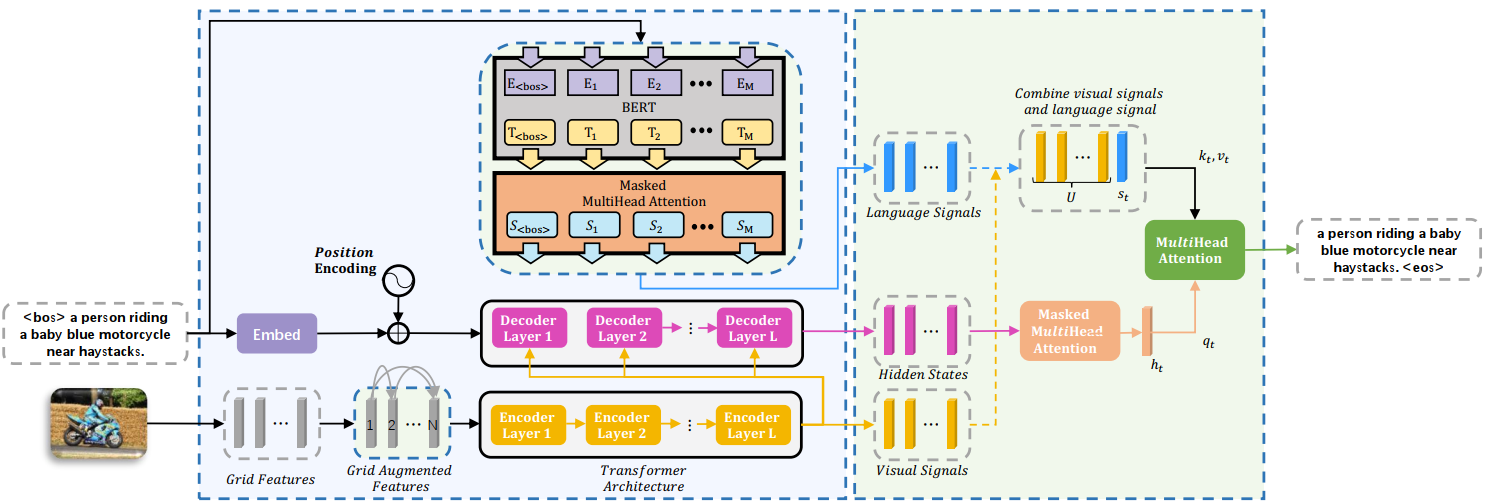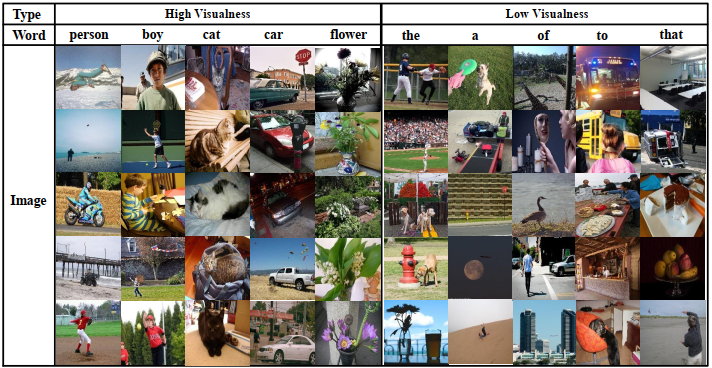RSTNet: Relationship-Sensitive Transformer Network
This repository contains the reference code for the paper RSTNet: Captioning with Adaptive Attention on Visual and Non-Visual Words (CVPR 2021).
Tips
Sometimes I may not be able to answer issues in time.
if you are in a hurry, you can add my wechat: zhangxuying1004 with the remark 'RSTNet'.
Environment setup
Clone the repository and create the m2release conda environment using the environment.yml file:
conda env create -f environment.yml
conda activate m2release
Then download spacy data by executing the following command:
python -m spacy download en
Note: Python 3.6 is required to run our code.
Data preparation
To run the code, annotations and visual features for the COCO dataset are needed.
First, most annotations have been prepared by [1], please download annotations.zip and rename the extracted folder as m2_annotations, please download image_info_test2014.json and put it into m2_annotations.
Then, visual features are computed with the code provided by [2]. To reproduce our result, please download the COCO features file X-101-features.tgz and rename the extracted folder as X101-features. Note that this visual features are huge, you can save the features as float16 for storage space saving by executing the following command:
python switch_datatype.py
Besides, in order to solve the shape difference and match the feat shape with region feat shape (50 regions), please execute the following command to reshape the visual to 49(7x7) and save all visual features as a h5py file.
python feats_process.py
Note that, you can also use my processed image features COCO-X-101-grid.hdf5 with extraction code wsvg for convenience。
Training procedure
Run python train_language.py and python train_transformer.py in sequence using the following arguments:
| Argument | Possible values |
|---|---|
--exp_name |
Experiment name |
--batch_size |
Batch size (default: 10) |
--workers |
Number of workers, accelerate model training in the xe stage. |
--head |
Number of heads (default: 8) |
--resume_last |
If used, the training will be resumed from the last checkpoint. |
--resume_best |
If used, the training will be resumed from the best checkpoint. |
--features_path |
Path to visual features file (h5py) |
--annotation_folder |
Path to m2_annotations |
For example, to train our BERT-based language model with the parameters used in our experiments, use
python train_language.py --exp_name bert_language --batch_size 50 --features_path /path/to/features --annotation_folder /path/to/annotations
to train our rstnet model with the parameters used in our experiments, use
python train_transformer.py --exp_name rstnet --batch_size 50 --m 40 --head 8 --features_path /path/to/features --annotation_folder /path/to/annotations
Evaluation
Run python test_transformer.py to evaluate the rstnet or python test_language.py to evaluate the language model using the following arguments:
| Argument | Possible values |
|---|---|
--batch_size |
Batch size (default: 10) |
--workers |
Number of workers (default: 0) |
--features_path |
Path to visual features file (h5py) |
--annotation_folder |
Path to m2_annotations |
Note that, you can also download the pretrained model file rstnet.pth and place it in saved_transformer_models folder o reproduce the our reported results.
Expected output
Under output_logs/, you may also find the expected output of the evaluation code.
References
[1] Cornia, M., Stefanini, M., Baraldi, L., & Cucchiara, R. (2020). Meshed-memory transformer for image captioning. In Proceedings of the IEEE/CVF Conference on Computer Vision and Pattern Recognition.
[2] Jiang, H., Misra, I., Rohrbach, M., Learned-Miller, E., & Chen, X. (2020). In defense of grid features for visual question answering. In Proceedings of the IEEE/CVF Conference on Computer Vision and Pattern Recognition.
Acknowledgements
Thanks Cornia et.al for their open source code M2 transformer, on which our implements are based.
Thanks Jiang et.al for the significant discovery in visual representation [2], which has given us a lot of inspiration.

